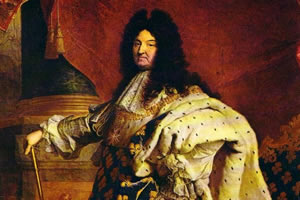In the progress of their commercial activities, the Phoenicians had significant prominence in the development of vessels that could put them in contact with the various civilizations of the Mediterranean Sea. The displacement by sea ended up establishing a wide network of commercial routes that guaranteed the circulation of the several products that aroused the interest of the powerful merchant class that maintains this type of activity economic.
The boats were equipped with sails and wooden bows where, generally, there was a representation of a horse's head. The goods traded were all stored in the ships' holds and protected in large clay pots filled with sand. In this way, the Phoenicians were able to preserve the goods and minimize material losses during transport.
In addition to worrying about the accommodation of traded goods, the Phoenicians also had to face the greed of other navigators crossing the length of the Mediterranean Sea. Piracy and looting were already common practices in maritime trade at that time. Therefore, some vessels moved with the protection of other warships equipped with oars and rams capable of intercepting the action of a pirate vessel.
At every commercial point dotted around the Mediterranean Sea there were large dwellings that housed the sailors, artisans and merchants involved in this bustling economic activity. When weather conditions prevented sea voyages, such shelters could serve as a landing for entire months for a given crew. It was through this impressive structure involved that the Phoenicians stood out in the commercial field.
However, this entire structure was not able to control the wealth that passed from hand to hand. Control over stocks, trade agreements, orders, prices and other negotiations would have to be properly recorded for all this effort to be properly rewarded. It was then that the Phoenician culture established the development of a system of symbols that could facilitate the process of communication between people.
The Phoenician symbol system consisted of a phonetic alphabet consisting of twenty-two letters. This communication system had great importance not only for the Phoenicians, but also influenced the long process that gave rise to the letters that make up the contemporary Western alphabet. The Greco-Roman civilization, considered the cradle of several current languages, was visibly influenced by the Phoenician graphic system.
By Rainer Sousa
Graduated in History
Do not stop now... There's more after the advertising ;)
Would you like to reference this text in a school or academic work? Look:
SOUSA, Rainer Gonçalves. "Commerce and writing among the Phoenicians"; Brazil School. Available in: https://brasilescola.uol.com.br/historiag/o-comercio-escrita-entre-os-fenicios.htm. Accessed on June 27, 2021.



